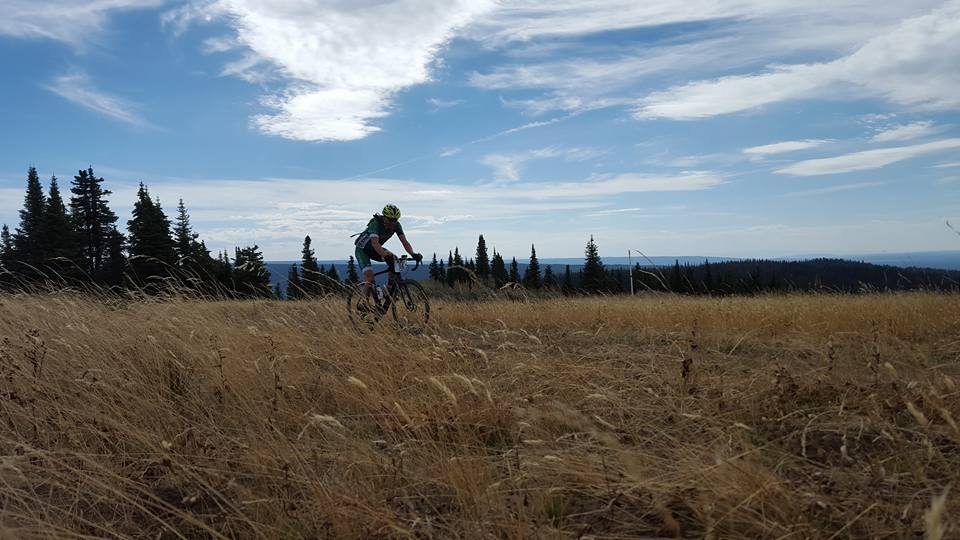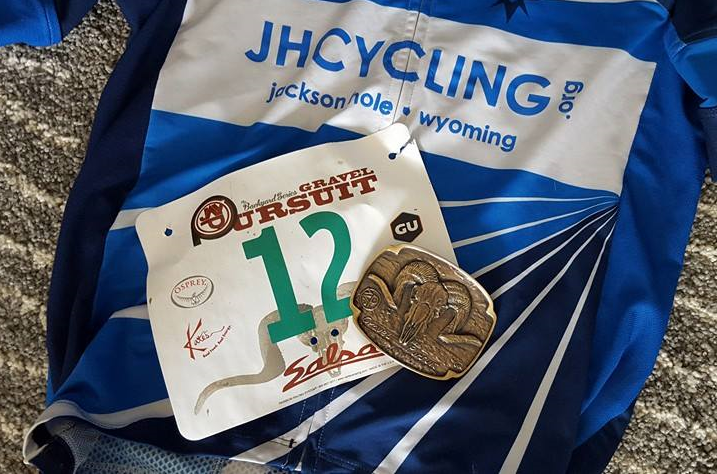By: Forest Dramis
This is a rebuttal to the article published by the Jackson Hole News & Guide on March 8, 2017.
To whom it may concern,
Doping in sport is a huge story right now. Russian state-run doping at the Sochi Olympics. Banning of Russian athletes at the Rio Olympics. The track and field BALCO Labs scandal. The upcoming Lance Armstrong trial. The UK Parliamentary Investigation into Team Sky and Team Great Britain, etc. All these and more, making headlines in newspapers across the world. There is no shortage of information on this subject.
The first line of the article reads: “Doping comes to Jackson. Allegedly.”
Meriam-Webster defines "allegedly" as: accused but not proven or convicted. i.e. an alleged burglar
Ms. Balogh tested positive, briefly fought her positive for exogenous testosterone and was banned and sanctioned by USADA and Ironman. Her doping was not alleged as the article states. Quite the contrary, she was convicted of the doping violation and was subsequently sentenced to a four-year ban. A four-year ban is the harshest penalty given by USADA other than a lifetime ban. It is a penalty more severe than Lance Armstrong’s team mates. First time offenders who have simply “made a mistake” are given 6 month bans.
JH News & Guide sport writer Clark Forster conducted lengthy interviews with community members in the run up to this article. Among those he interviewed were past Olympians and a USATriathlon Certified Coach. No part of any of those interviews appears in the article. Why were their comments not included in the article?
Other than the selected quotes from Ms. Balogh and her side of the story, there appears to be little original reporting on the story. Almost all other information in the article is simply cut and pasted from the Ironman Press Release. Except this passage which directly contradicts Ms. Balogh’s assertion of ignorance:
“It is unfortunate that Ms. Balogh chose to disregard the education, advice and knowledge she had regarding anti-doping and instead competed in violation of the IRONMAN Anti-Doping Rules,” said Kate Mittelstadt, Director of the IRONMAN Anti-Doping Program.
And this one:
“Through this investigation, IRONMAN confirmed that Ms. Balogh was aware of the inherent risks associated with her conduct and proceeded to knowingly take the prohibited substance.”
The statements made by Ms. Balogh are never questioned in the article. She states in the article that she didn’t know testosterone was a banned substance. In this post-Lance Armstrong age, to plead ignorance on testosterone being a Performance Enhancing Drug (PED) is beyond the pale. One of the biggest scandals in American sport was the testosterone/creatine juicing of Mark McGwire and Sammy Sosa of the Chicago Cubs and Barry Bonds, Jose Canseco, Many Ramirez, Alex Rodriguez, the list goes. The list of NFL players caught cheating with testosterone and other PEDs is staggeringly long. Steroid abuse is a common theme in today's media.
Ms. Balogh states that she disqualified herself from the Ironman race. That is untrue. Ironman removed her from the race results after her positive. This can be found by checking dates readily available online. This was not questioned in the article.
She states she was taking testosterone for ”two to three years.” By her own admission, this means her results from July 11, 2013 until today should be removed. Did she remove herself from these results? This was not questioned in the article.
The Ironman press release states, “Following the presentation of evidence, she decided to withdraw her appeal and instead accept the sanction.” She states in your article that cost was the reason she stopped her litigation. This was not questioned in the article.
The Ironman press release states members of Ms. Balogh’s team confronted her and later turned her in to Ironman. Ms. Balogh says that statement is “completely inaccurate.” This was not questioned in the article.
Ms. Balogh is quoted in the article as saying, “… she would be surprised if any amateur triathletes were doping.” Does she mean besides herself? Doping is rife in amateur sports. Especially endurance sports like cycling and triathlon. Velonews recently called amateur doping "Cycling's Biggest Threat."
The article quotes Ms. Balogh that taking testosterone, “... allowed me to stay healthy and train, and not be recovering from injury,” and that she is "no longer taking testosterone after her positive test." Yet she continued to train and run Ultra Marathons after her test and after she says she stopped taking testosterone.
Therapeutic Use Exemptions (TUEs) and Recreational Competitor TUE (RCTUEs) were developed by USADA specifically for athletes, elite and amateur, with medical conditions that demand use of a banned substance. The RCTUE was implemented by USADA because of the desire for older athletes with declining testosterone levels and other amateur athletes with testosterone and other related medical issues, to still be able to race. A standard TUE would be too strict to allow these amateur athletes to compete legally and so the RCTUE was created to let amateur athletes with these issues have a more flexible path to a TUE. Ms. Balogh never applied for or was granted a TUE or RCTUE.
The issue of Ms. Balogh's participation in running races is separate from her USADA doping positive. USADA suspensions pertain solely to events that are sanctioned by USADA partners. If a race is not sanctioned by USADA or one of its partners (US Track & Field, US Sky Running etc.), then there is no legal reason Ms. Balogh would be prohibited from registering for a race. Some races, even though they are not a USADA partner (or worldwide, a WADA partner) choose to follow and adhere to USADA/WADA doping rules. Races can choose to allow or not allow those serving USADA suspensions to compete in their events.
According to the Ironman press release, Ms. Balogh's doping ban began July 11, 2016. However, she participated in The North Face 50 on September 16, 2016, after her suspension began. The North Face 50 has an anti-doping policy, that all racers agree to during the registration process, that specifically disallows racers under a doping suspension from participating.
The North Face released the following statement regarding Ms. Balogh: “It has come to our attention that Holly Ballogh (sic), a runner who was currently serving a doping ban at the time of the race, ran The North Face Endurance Challenge Utah 50 Mile race in 2016 under her maiden name of Hancock. In light of this situation, Holly has been retroactively disqualified from the race as she broke our clean sport policy that all athletes are required to agree to during the registration process. Steps have been taken to remove her from the results on our website and we are working with UltraSignup and the I-TRA to also have her removed from their result listings. This was not mentioned in the article.
Unfortunately, the article paints Ms. Balogh as a victim when she not only committed the infraction, but was convicted of the infraction. The article does not present any viewpoints other than Ms. Balogh's. At no point in the article does Ms. Balogh apologize to the athletic community or those whose results she has stolen, or seem display any remorse over what she has done.
The article doesn't discuss the many athletes who struggled to achieve their dreams. The athletes who sacrificed time with their loved ones, sacrificed money, time, sweat, and blood to achieve their dreams without cheating. Those athletes were cheated of their accomplishments. Dora Heller of Israel finished 2nd in her age group at Ironman Texas. While the Ironman records have now been changed, Ms. Heller's accomplishment will never be celebrated as it should have been, proudly standing on the top step of the podium in front of her family and loved ones.
JHCycling's stance on doping in sport is absolute. Anyone deemed positive by USADA or WADA (regardless of sport) is banned from participating in any and all JHCycling races and events for the duration of their ban. Period.
Thank you for caring about clean sport and thank you for taking the time to read this.
Forest Dramis
Executive Director - JHCycling.org
COMMENT PROTOCOL
If you wish to comment on this rebuttal or on the original JH News & Guide article, please do so below, with the following caveat:
The issue at hand is the JH News & Guide article, Ms. Balogh's doping and doping in general. Ms. Balogh's personal life (nor anyone else's) has anything to do with the issue we are discussing. All comments should be civil and not devolve to name calling, profanity or casting aspersions on one's character. All rational civil discourse, regardless of point of view, will be preserved in the comments below. Any comments that stray from the above constraints, regardless of point of view, will be deleted.









































